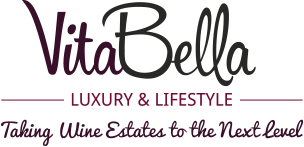(This post is the Executive Summary of the “Covid-19 and the Next Normal? A new Age for Wine” report published by VitaBella Luxury & Lifestyle on December 2020)
Do wine consumers change habits easily ? Behavioral science tells us that it takes an average of two months to form a new habit, which will stick only if reinforced through routines and rewards. If so, what impact the COVID-19 pandemic will have on people’s behaviour? There is little doubt that 2021 will continue to be tough for many as the COVID-19 pandemic tracks an uncertain trajectory. But unlike the economic crises faced in the past decades, the COVID-19 crisis is changing people’s behaviour very deeply. As the world will emerge from the pandemic, many people will review their criteria and priorities for buying products, including wine. Contributing to the protection of the planet, adopting more ethical and responsible lifestyles, and being more attentive to the origin and provenance of the products they buy will certainly be important concerns for an increasing number of consumers. Times of change are inherently rich with opportunity. In our latest report “THE NEXT NORMAL? A NEW AGE FOR WINE” dedicated exclusively to VitaBella’s clients, we analyzed 10 major trends. Here are some thoughts on 4 of them:
Wine brands with strong values and purpose will win
There is an increase in overall net sentiment across environmental and ethical product attributes as consumers have more choices about where to shop and what to buy. What do we expect as a consumer from a brand today? A brand committed 1) in its contribution to society 2) in its respect for the environment 3) in its relationship with its customers 4) in its Corporate Social Responsibility (CSR). Consumers will particularly reward enterprises that treat their workers and the environment with respect (read the article “Why we need ethical wine” written on this topic by Jane Anson in Decanter).
Digitalization will accelerate
Digitalization is fueling major opportunities across the value chain. Analyzing big data through artificial intelligence (AI) and augmented reality (AR) applications help to track continually-evolving consumer behavior. During the pandemic, social media has been used to obtain indicators of customer sentiment toward brands. The ability to detect changes in sentiment enables brands to improve their understanding of the needs of their customer base and guide the creation of effective communication campaigns. Augmented reality will make it possible to respond to 3 challenges for wine brands: communicating with Gen Z through co-creation, showing their world in a fun & interactive way and engaging in a new collaborative approach between the product and the customer.
Big brands won the game during the COVID-19 pandemic. Small brands will come back.
Over the last few years, growth was fueled largely by consumer preference for small brands’ authenticity and uniqueness. Look at what happened to small winegrowers in Champagne and how some of them developed their business strongly. But the COVID-19 pandemic has revived some large brands. Consumers preferred well-known brands versus trying new, smaller brands. Availability was clearly a major reason. Brand authenticity is increasingly important to consumers, and that will likely benefit the small brands that are resilient enough to weather the crisis.
Physical stores will still exist. Wine consumers need them !
I am often told that e-commerce will revolutionize the way we buy wine and will kill physical stores. My answer is clear: Not everyone has liked their online shopping experience! Physical stores which offer a unique customer experience (a privileged relationship and bespoke advice) will not be completely replaced by digital-only, and an agile omnichannel sales approach is needed.
(Guillaume Jourdan wrote this post. You can reach him via LinkedIn)



